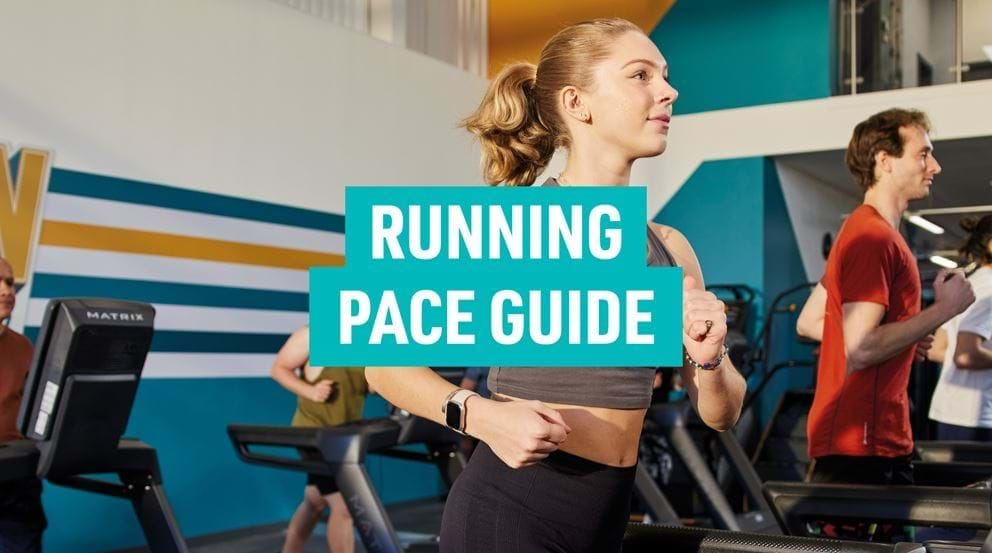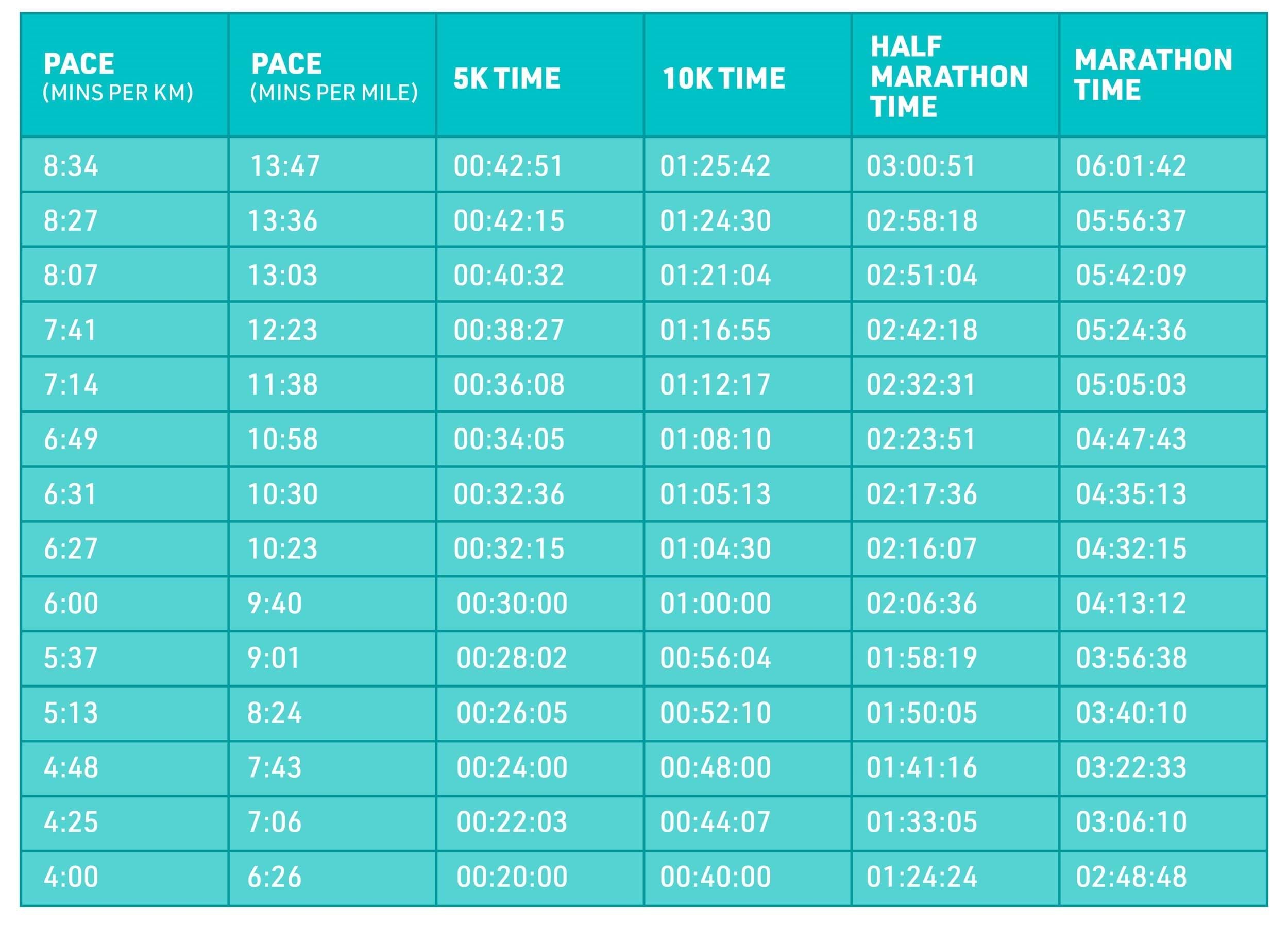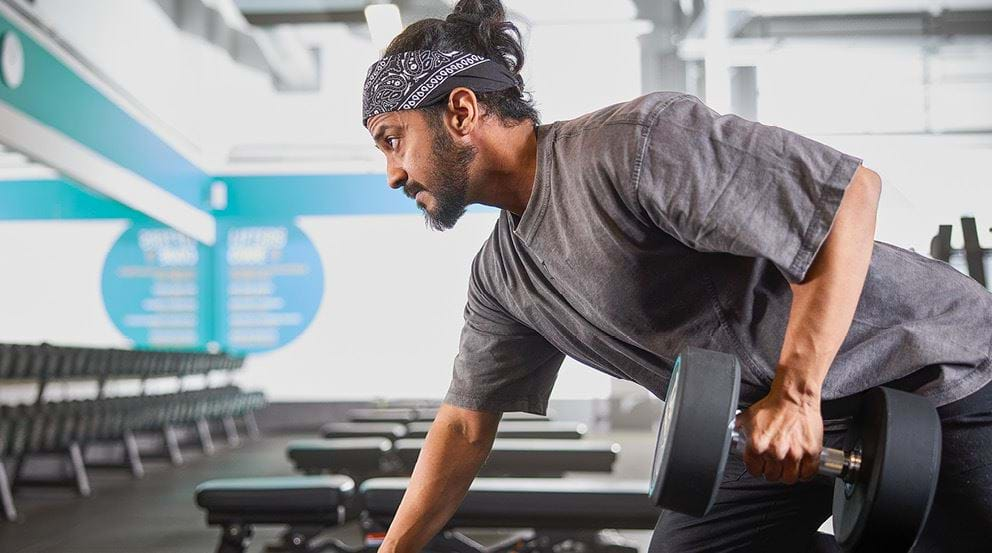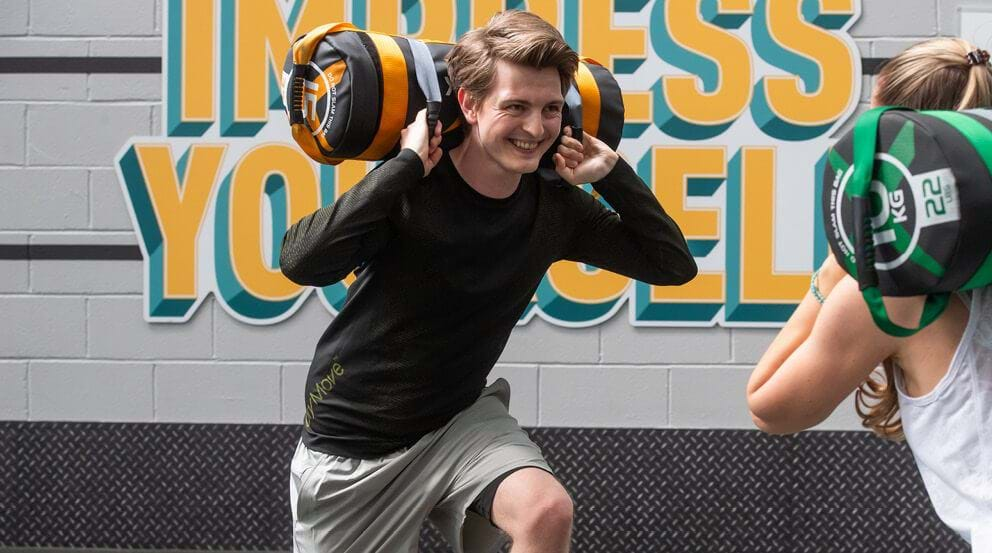Running Pace Guide

What Is A Good Running Pace | How To Pace Yourself | What Is Tempo Running | How To Improve Pace | How To Calculate Pace
Running is one of the best cardio exercises there is. It's free to do, requires minimal equipment, and it's an exercise our bodies are built to do. It also burns calories, improves our heart and circulatory health, and increases endurance. It's basically a super sport!
If you've been running for some time, you might be wondering how you can progress your runs. While adding distance is a great way to increase the difficulty, there's a limit to how much you can add without taking up huge chunks of time.
Increasing your running pace (how fast you run) can be a great way to level up your runs. Here, PureGym PT and manager Chris Collett, and Leeds based PT Alin, who are both keen runners, look at what is a good running pace, how to calculate your running pace, and how to improve your pace of run.
What Is A Good Run Pace?
A common running goal people aim for is running 5km in 30 minutes, or 10km in an hour. This would be a pace of 9:39 minutes per mile, or 6.00 minutes per kilometre. If you wanted to hit 5km in 25 minutes, this would be a pace of 8.03 minutes per mile or 5.00 minutes per kilometre.
However, unless you're training for an event where want to achieve a race in a certain amount of time or aiming to hit a personal best in your session, there isn't an 'ideal' running pace, and what you can achieve one week may be different to another.
Alin says: There is no one right pace to aim for - even the same person will have a different ideal pace depending on the distance they are aiming to run. The more trained someone is, the faster their pace will be. For competitive running, pace is measured in splits - how long it takes to complete each 1km, 5km, 10km. For shorter distances, a strategy can be to have 90% even splits, and then go all in for the last 10%; for long distances, a common pacing strategy is having 'negative' splits - starting at an easier pace to ensure you have enough energy to push in the second half. For casual running, a good pace is one that you can sustain for the entire session - it should be challenging, but still allow you to finish. For competitive running,
Chris agrees, adding that: For casual runs, it can be more helpful to focus on rate of perceived exertion (RPE) -- how hard a run feels. There are many ways to track RPE but scoring out of 10 is a simple option.
There are plenty of variables that impact how hard a run feels, and therefore what pace you can achieve, including:
How much sleep you have had. Running requires a lot of energy, and if you've had a few bad night's sleep, it'll be tough to muster up the energy needed to run fast. If you've just had the best night's sleep of your life, you'll probably catch yourself going faster without realising.
What you've eaten. To adequately fuel your runs, you need to make sure you're eating enough food throughout the day and before your run, while avoiding anything too heavy too close to the run. While this will differ for individuals, and for each run, the basics involve eating enough calories throughout the day and having some carbs 2-3 hours before a run, supplementing with running gels if necessary. We've previously shared advice on what to eat during marathon training here which has some advice on this topic.
The weather. If you're running outside, don't underestimate the impact weather can have on your runs! If it's extremely cold, your body uses more energy to stay warm which can mean less energy for running. On windy days, running into the wind can make it very difficult to run at your preferred pace, and if it's raining, you may need to go slower to avoid slipping.
There are plenty of other factors that can impact how hard a run feels, like stress, if you've been ill, how much you've been training, hormones, and more!
Aiming to achieve a certain RPE rather than hit a specific pace is a great way of listening to your body. You can also aim to hit different RPE for different runs -- for example, hill sprints might be a 9/10 effort, whereas an easy run might be a 5/10 effort.
If you struggle to know what effort level to run at for casual runs or are guilty of always pushing for speed and then burning out, aim to run at a pace where you can still hold a conversation with someone -- even if that means talking to yourself every now and then on your run!
How To Pace Yourself When Running
Chris advises that: Getting a smart watch with GPS is one of the best ways to monitor your pace while running, as you can see what pace you are achieving and whether you need to speed it up or slow it down. Some watches will even tell you to slow down based on your heart rate! Some apps allow you to track pace on your smartphone, which can be another option if you bring your phone on your runs.
For less rigorous tracking, listening to your body is the best way to pace yourself -- if you're struggling to breathe, you know you're running too fast! Aiming for a conversational pace or a consistent effort can help to keep a consistent pace if you prefer not use smartwatches.
If you still struggle with pacing too fast or slow, try changing what you listen to on your runs. Upbeat music can help increase the speed of your runs, and some streaming services even have playlists based on different running paces so you can run to the beat of the music! If you are trying to slow your pace for a longer, more controlled run, try a slower genre of music or switching for podcasts. Podcasts naturally lower your focus on running as you focus on listening, which can help to reduce your pace without conscious effort.
Alin agrees, adding: For recreational running, the 'talk test' is a really helpful way to set the pace. If you can have a conversation, you're running at a sustainable pace - you can also try to sing along with your playlist! For competitive runners who tend to pace too fast and burn out quickly, other ways to assess your pace include checking in on your breathing and heart rate - if they are becoming faster and faster, slow down or you'll run out of breath! While it seems counter intuitive, running at slower speeds for the full event can get you a better time than alternating walking with tempo running speed.
Alin also notes: As you get fitter, your pace should increase, so it can be motivational and rewarding to monitor your pace over time.
What Is Tempo Running Pace
Tempo running pace is the pace that would get you to 5k around 30 seconds slower than your average 5k time. This pace feels 'comfortably hard' -- it's doable but challenging, and is usually around 7-8/10 effort.
Alin notes: Tempo running pace is more challenging pace that may be closer to the target pace for the race. In recreational or training for running the tempo pace or run is very often measured by the intensity of perceived exertion as depicted previously and it should be sustainable for around 1 hour for trained individuals."
Chris adds: A tempo run is a type of speed interval workout that involves running 1-2 speeds (tempo pace and easy pace) throughout the run. This can help with speed and endurance, but pushes the body hard -- it's important tempo runs are done alongside other runs, not as the sole form of training.
Tempo runs can improve speed by pushing your body close to the lactate threshold, which is the point where lactic acid builds up in the muscles faster than it can be removed. By running close to this threshold, you can train the body to last longer or go faster before it reaches the lactate threshold. Holding a tempo pace can be challenging -- run too fast and reach the lactic threshold and you'll experience intense burning and fatigue in the muscles and be unable to continue. Run too slow and you won't get the benefits of a tempo run!
There are different ways to structure a tempo run. A 7km tempo session that I do is:
- 1-2km at easy pace
- 3-5km at tempo pace
- 5-7km at easy pace
- Capped at 40-minute total
How To Improve Your Running Pace
If you are training consistently, you're running pace will naturally increase as your body gets stronger and your cardiovascular system gets more efficient.
If you want to make your pace gains as quick as possible, steps to take include:
Increasing milage.
Chris says: Increasing the distance you run each week allows your body to get stronger and more efficient at running. Over shorter distances, this can translate to more speed.
Adding tempo runs. As mentioned above, tempo runs can train the body to tolerate running at a higher speed before reaching the lactate threshold. Alin notes: Tempo runs should feel challenging, around 7-8 effort level and if doing the talk test, you should only be able to speak a few words at a time. These runs train your body to sustain speed over distance.
Including sprint workouts. Chris says: Sprint workouts are similar to tempo runs, except that they push the body into lactate threshold. While this cannot be sustained for as long, it builds tolerance to an increase in lactate acid and increases the threshold. Alin adds: Sprints are a great way to increase pace, but for beginners it is recommended to start easy - try 4-5 sprints alternated with 2-3 minutes of walking, and build by either adding more sprints (no more than 15 per session), or decreasing the breaks. Don't do more than three sprint sessions a week.
Perfect your breathing technique. Improving your breathing can help to bring oxygen in more efficiently, which will boost your performance. Find breathing exercises and techniques to improve your running here.
Improve your running posture. Good running posture helps you to run more efficiently, meaning more speed and endurance. Learn how to improve your run posture here.
How To Calculate Your Running Pace
Running pace can be calculated with a simple formula: Pace = Time/Distance. This works for both kilometres and miles; most people tend to use kilometre for distances up to 10k, and miles for longer distances.
Many smartwatches and running apps automatically calculate your running pace, but it is easy to do so manually using the formula. All you need to know is what distance you ran, and how long it took you.
If you are trying to work out how long it will take you to reach a specific distance at your running pace, the Strava running pace calculator is an easy online tool. If you want to know what pace to run to achieve your preferred time, you can use our pace chart for running below.

It's easy to get caught up in numbers with running but I have found the key to enjoying your journey and progress is not to compare yourself with anybody else. My personal best is someone else's easy run, and my easy run is someone else's personal best! My goal for 2023 is a sub-20 5k, if you want to see what sessions I am doing you can follow my training on Strava @ChrisCollett.
If you're ready to take on the next running challenge, why not check out our 20 week marathon training plan?
Don't forget to add strength training into your running training to help with performance and reduce injury risk -- you can find the best strength exercises for runners here. Find your nearest PureGym here.


